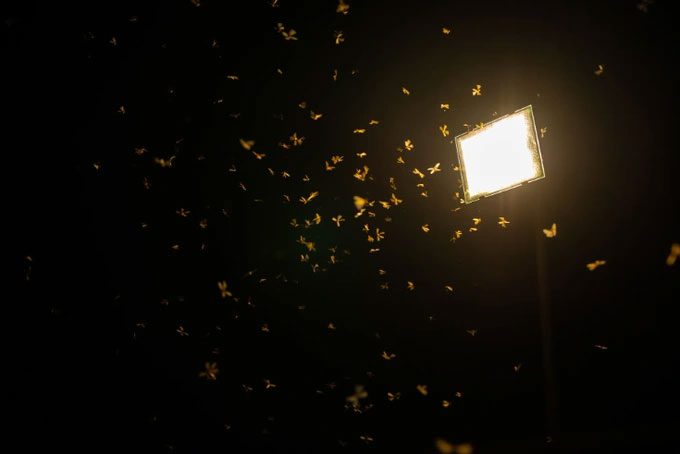You may have noticed small winged insects that resemble butterflies fluttering around bright lights in your home at night, or perhaps you’ve wondered why mosquito traps attract mosquitoes.

Butterflies seem to love flying around bright lights at night. (Photo: BazziBa/ Adobe).
While some people believe that certain insects are attracted to artificial light, recent research has revealed that the reason is not that they are drawn to the light, but rather that they become trapped by it.
One of the study’s authors, researcher Samuel Fabian from the University of London, stated that the relationship between insects and light has now been clarified. The main reason lies in the insects’ body control systems.
The researchers identified three key factors when examining the attraction of light to insects.
- First, when insects fly above a light source, they tend to flip over and dive straight down while attempting to fly upside down.
- Second, after passing under the light, they tend to wander, climb, then suddenly stop and ultimately fall.
- Third, they fly perpendicular to the light, circling around the light source instead of flying directly toward it. Although it appears that these insects are flying straight into the light, their body control systems are being interfered with, causing such actions.

Moths circling around a bright light. (Photo: Iker/ Adobe).
Upon further investigation, scientists found that these insects experience what is called “dorsal light response”, based on how they try to keep the light behind them whenever they approach it.
This reflex is also observed in some fish species and is essentially a way for animals to determine their upward direction and maintain an upright posture.
Under normal conditions, this occurs at their discretion. However, during dawn and dusk, insects may face issues with this body control system.
The researchers suggest that the problem is not that insects find light attractive and rush toward it, but rather that they lose control when approaching light. This valuable research finding could help explain some important mechanisms of various insect species around the world.


















































